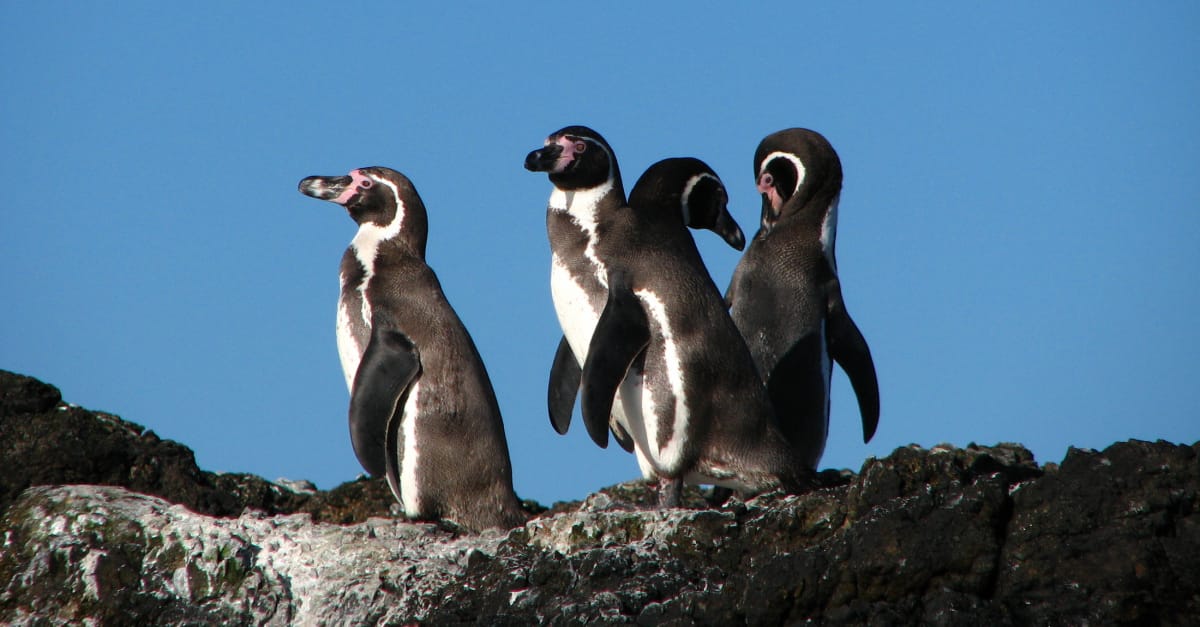Every April 25th, World Penguin Day is celebrated, an occasion established by the Global Penguin Society to honor these iconic birds. The date holds special significance for Chile, home to the largest colony of Humboldt penguins in the world.
An astounding 80% of the Humboldt penguin’s global population lives along the central coast of Chile, primarily within the Humboldt Penguin National Reserve. This protected area, located between the Atacama and Coquimbo regions, serves as a critical refuge for this remarkable species.
The Humboldt penguin is one of the most beloved birds on the planet, easily recognized by its charming black and white plumage. Medium-sized among penguins, it stands around 70 centimeters tall and weighs approximately 4 kilograms. It is larger than the tiny little blue penguin but smaller than the majestic emperor penguin.
A Species Under Threat
On this special occasion, Greenpeace Chile is calling attention to the alarming situation facing the Humboldt penguin. According to Roxana Núñez, spokesperson for Greenpeace, the survival of the species demands urgent and coordinated efforts from governments, private sectors, and civil society to safeguard their fragile habitat. External factors, particularly human activity, are putting their future at risk.
Here are five critical facts you should know about the Humboldt penguin and how we can help protect them:
1. Conservation Status: Vulnerable
The Humboldt penguin is currently classified as “vulnerable” by the International Union for Conservation of Nature (IUCN), with an estimated population of only 23,800 individuals. Their primary nesting grounds, including Chañaral, Choros, and Pan de Azúcar islands, are crucial for their continued survival.
Protecting these breeding sites is more important than ever. Without safe nesting areas, the species faces the risk of a dramatic decline.
2. Limited Reproduction
Humboldt penguins reproduce just once per year, typically laying one or two eggs—only if environmental conditions are favorable. They can be seen year-round around their breeding sites.
Their reproductive success largely depends on the protection of their nests. Egg incubation takes about 40 to 42 days. However, worrying scientific data shows that the number of breeding pairs has plummeted from 7,970 in 2003 to only 1,178 in 2021—a staggering 85.2% decrease.
3. A Unique and Biodiverse Habitat
The Humboldt Archipelago, known as the “Chilean Galapagos,” consists of eight islands and islets. It is one of the world’s richest marine ecosystems, home to around 560 marine species.
This unique environment is critical not only for the Humboldt penguin’s survival but also for a host of other marine life. Here, penguins find their primary food sources and maintain their most significant population concentrations—about 80% of the world’s Humboldt penguins reside here.
4. Fear of Human Disturbance
Humboldt penguins are highly sensitive to human presence. When people approach their nesting sites, penguins experience elevated heart rates and often abandon their nests.
According to Sernapesca, the Chilean fisheries and aquaculture service, human activities such as nearby fishing operations have contributed significantly to the loss of high-quality nesting sites. This situation could worsen if industrial expansion around the archipelago continues, further endangering the species.
5. Penguins: Expert Swimmers, Not Flyers
Like all penguins, Humboldt penguins cannot fly. Instead, they are built for swimming, with torpedo-shaped bodies and powerful, flipper-like wings that allow them to glide gracefully underwater. Their feet and tails act as rudders, helping them steer.
During the chick-rearing season, adult penguins typically forage for food within a 20–35 km radius of their colony. Incubating adults may venture even farther, up to 72 km offshore, to find nourishment.
The Threat of the Dominga Project
Despite the urgent need to protect these vulnerable animals, projects like the proposed Dominga mining-port complex pose serious threats. Greenpeace’s Roxana Núñez warns that building a large industrial port only 30 kilometers from the Humboldt Penguin National Reserve would have devastating consequences.
Not only would the construction disrupt nearby nesting sites like Totoralillo Norte, but the increased ship traffic could also interfere with the penguins’ foraging routes, making it harder for them to find food and survive.
Although the mining company Andes Iron has proposed compensatory measures, such as clearing rats from a neighboring islet called Pájaros 1, experts argue that these efforts are insufficient. Effective conservation strategies must genuinely improve biodiversity and help boost penguin populations—not just offer minimal token measures.
In conclusion, World Penguin Day is a reminder not only to celebrate these extraordinary birds but also to take meaningful action to ensure their survival. Protecting the Humboldt penguin is not just about preserving one species—it’s about safeguarding an entire ecosystem that is vital to Chile’s natural heritage and the planet’s biodiversity.



